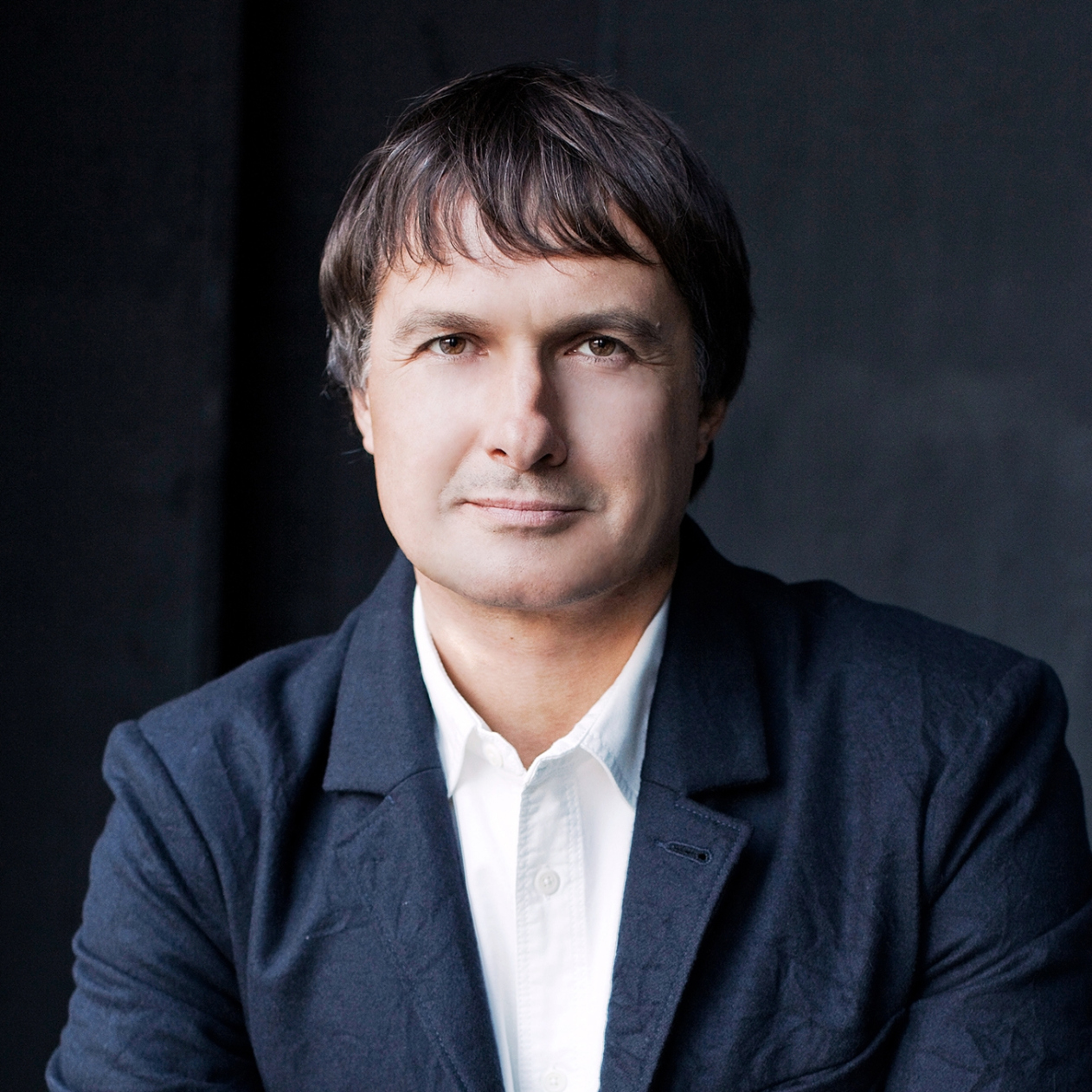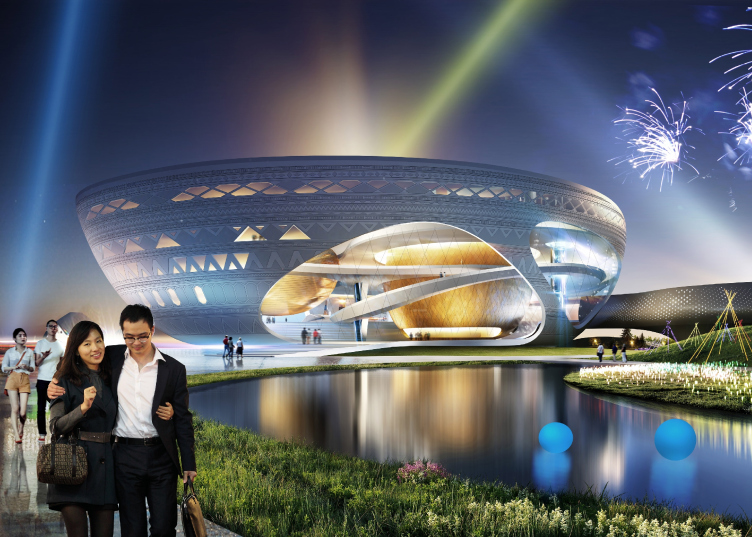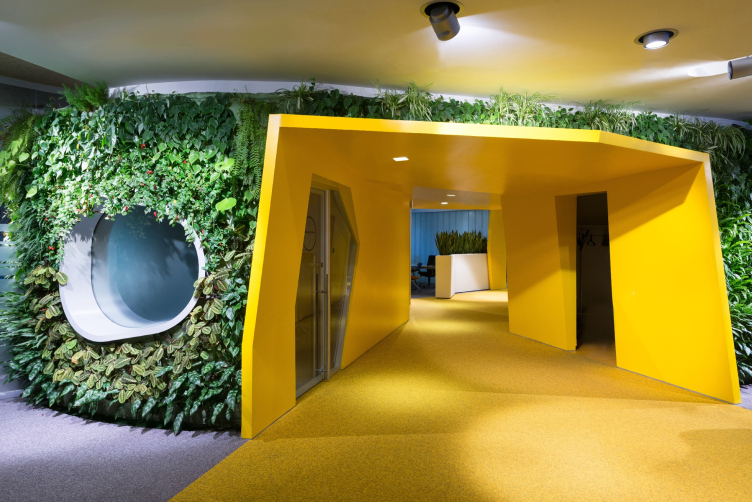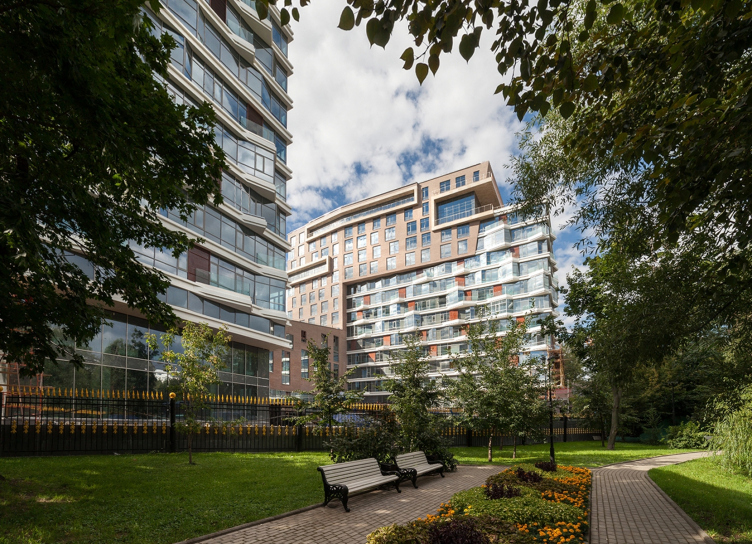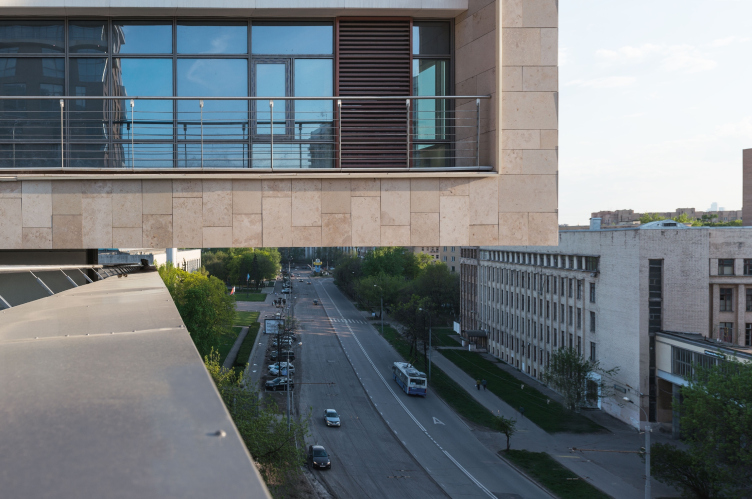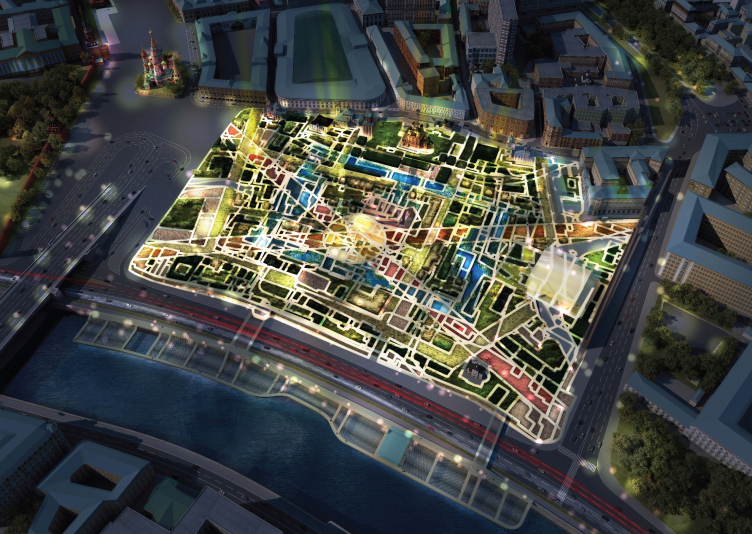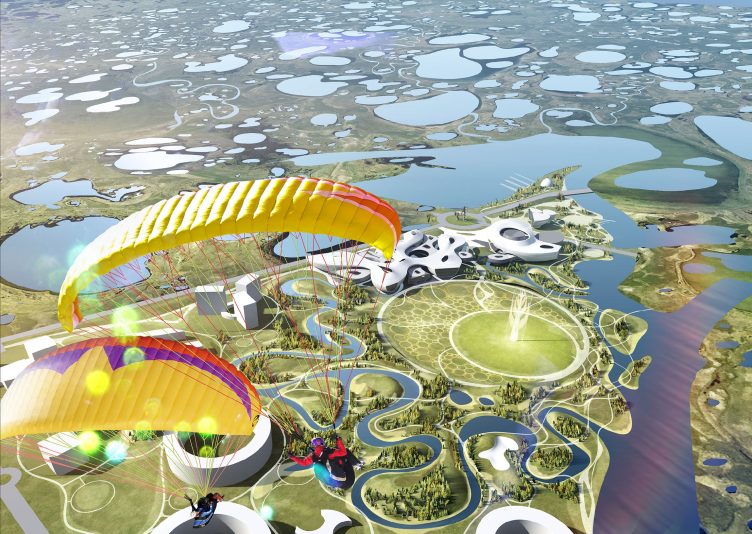Today, there are a lot of numerous architectural contests organized in this country, diverse in the geography of their participants and the lineups of the judging panels. Them-based showcases are a rarity these days, and this is why we paid special attention to "Archnovation", a comparatively young contest organized by Nizhniy Novgorod gallery of Sergey Tumanin. And the reason for the conversation with Anton Nadtochiy was his already second Grand Prix at "Archnovation" that took place for the third time around.
- Anton, congratulations! "Archnovation" contest is all about steady growth, hence the first question: to what degree are you able to address these issues in your projects? Are these your personal priorities or is this a byproduct that inevitably just appears whenever you design a high-quality building?
- For "Atrium", following the basic principles of steady growth is the indispensable feature of today's professional product. However, hyping up this idea too much turns it into a set of clichés and makes it overly populist, substituting the original architectural quality. Because a project can indeed be perfect from the energy efficiency, recycling, and СО2 control standpoints but it can be at the same time hideous if we are to speak of architecture as an art of creating the environment for people to live in. Yes, technologically the buildings grow better and better every year - this is a natural and objective process that has actually little to do with the architect's will or creativity. Technologies develop, construction norms change, the requirements are getting more and more exacting, and this is normal. What makes "Archnovation" different is the fact that it first of all appreciates the architectural experiment, while steady growth is only viewed as part of this comprehensive process. It was really exciting for us to design "Barkli Park" in accordance with the requirements of LEED golden certificate. We are happy that our project got a few awards in the field of "green construction" over the years. But I repeat: the mere fact of our project meeting the technical and ecological requirements and standards has nothing to do with architecture.
Anton Nadtochiy, 2015. Photo courtesy by "Atrium"
Glance from south to north, from the Sovietskoy Armii Street. Barkli Park © "Atrium"
- So what do you think the notion of "architectural innovation" is all about?
- To us, innovation in architecture means breaking away from the stereotypes and creating new sensations and new values while working on space and architectural form. Innovation per se is not necessarily something that architecture always needs and is by no means a goal in itself - simply because a building is created first of all as a consumer product. But if you are at the same time able to overcome the pressure of the typology limitations and create a unique and recognizable building, if you are able to find a reasonable balance and at the same time get added value both for your customer and for the end consumer, if your building is perceived not only as a purely utilitarian object but can also bring aesthetic and intellectual enjoyment, i.e. can be perceived as a work of art - that in my book is innovation. Furthermore, a building's architecture must broadcast the fundamental values of its time, and, better yet, anticipate the values that are yet to come, that have not become commonplace. From our point of view, each building, each territory must have an identity of its own, must be artistically unique, and custom-designed for this specific place and this specific task. It must grow from the contest and it must create inside of it fundamentally new and organic relationships and environment. Only by doing this you can make a stand against the facelessness, globalization, and the consequences of industrialization.
- And what about your green certificates? Are they just a marketing twist?
- Yes and no. On the surface, there is a necessity of the developers selling your product to the end consumer under the banner of eco-friendliness. This is both a marketing tool, and a means of expanding the market, and for a lot of countries, these green technologies are an economic necessity - which does not work in Russia so far. And if we are to delve deeper into the matter, then we will see that the holistic approach and the ideas of steady growth have already taken roots in the public mind.
As for obtaining the certificate, it is basically a procedure that you pay for. Today, this is a huge developing transnational business that involves product manufacturers, trading companies, and even governments. And there is a lot of competition on this market, many different structures from different countries are struggling to get their share. Not long ago, Russia got its own Green Construction board, as well as a green standard of its own. What's funny though is the fact that you will never be able to hype up the most clever and thought-out of construction rules and regulations so much - simply because they are free of charge, official, mandatory, and because they are a "common standard". The current Russian rules and regulations are pretty tough when it comes to the conservation issues so if you make sure that you abide by these rules this will mean that you will certainly get if not golden then the silver certificate. However, this eco-certification thing is presented as something elite and exclusive, as a competitive edge or something.
- Sounds like a "status" posh acquisition...
- Insomuch as this status is presented by the brand, yes, definitely so! For this very reason, the green standards always try to differ from the existing norms and cover a range of issues that is "broader" than the "narrow" construction rules and regulations, constantly forming extra criteria, having more extended evaluation grids and generally presenting the process of obtaining such certificate as some kind of a competition. Generally speaking, these are, of course, positive processes improving the operational and technical qualities of the buildings but, as I already said, often making a negative effect on the quality if architecture as such.
- What is the specific reason for your attention to Archnovation?
- The name of the prize speaks for itself. The ability to create not just a quality product around you but bring in something new, the courage to make an author's stand and the courage to experiment is one of the key criteria of evaluation and appreciation of somebody's mastery. Without this, architecture is doomed to stagnate. It was interesting to us to submit our works to our colleagues' judgment and see just how they would evaluate them from these particular standpoints. This year, apart from Grand Prix, we also got the golden diploma in "town planning" nomination for our contest project in the city of Yakutsk and the silver diploma for the interiors of Yandex HQ. Because in our work we consider the architectural experiment to be one of the main criteria, getting this "Archnovation" prize was particularly great for us.
The project of the complex "Olonkho Land" in Yakutia © "Atrium"
Yandex HQ on Leo Tolstoy Street (second stage). Finish in the form of a living plant wall © "Atrium" Architectural Bureau
- Your Barkli Park is indeed unconventional. How did this project develop?
- This project did meet with a few difficulties along the way, and it actually took up five years of our time. At first an office center was designed but later on the customer switched over to the residential function. This land site has special requirements on the ratio of the green territories versus the construction blueprint, and our concept actually started with the desire to come up with something that would meet these requirements. In this project, we used a lot of custom-designed solutions, for example, there are green halls and conservatories on the floors, as well as a lot of usable terraces - public and private. As for the main special feature of this building, it is about the fact that the building houses a center of sports technologies in it. The necessity of funding room for a jogging track about eighty meters long and a 25-meter swimming pool made us use design solutions that are unconventional for residential buildings - with spans of about 20 meters and 6-meter long cantilevers. As a result, the residential block of glass and Jurassic stone literally overhangs above the brick volume of the sports center. This allowed for the customer to get the necessary number of apartments and keep the number of floors of the southern building at a minimum at the same time. At the stage of developing the working documents, the customer decided to make the class of the house more upmarket by increasing the floor height, using more expensive facade materials and inviting to design the sample apartments and lobbies Philip Starck. At this project, we performed the functions of the master designer and we were the architects as well. We designed everything - from the general concept to the working documents of the interiors and the landscape. This was not an easy but still a very productive and exciting process of working with our customers, contractors, and builders.
Nevertheless, the correct viewpoint from the park entrance restores the building in its "green" reputation. Barkli Park at the Sovietskoy Armii Street © "Atrium"
A view of the cantilever of the southern building from the gym roof, from north to south. Barkli Park at the Sovietskoy Armii Street © "Atrium"
- You've been watching "Archnovation" for years now. What do you think must be changed, added or improved? Me, for example, I am dubious about its "corporate exclusiveness": architects judge architects.
- I have already said that I like the professional focus of this prize where architects judge architects - everything you need and nothing you don't. This is vastly different from other contests and prizes where oftentimes numerical values come into play or the winners are defined by the sum total of their previous victories and sometimes even by public voting! Such approaches can also exist of course, they give you the idea of the industry's public opinion - but against this background "Archnovation" really stands out for its unique specifics. The quality of an architectural experiment can only be judged by professionals.
In spite of its regional status, this contest has long since acquired a regional importance. I wish it to become more and more popular and gather projects of better and better quality. This prize must become the driver of architectural innovation and it must promote the development of education and architectural technologies and experiments in Russia. In this respect, there is room for development, to say the least. What we must do is take Russian architecture to the world-class level - which will require hard work from many people. The fact if there being such a prize is a powerful incentive for moving in that direction.
- Judging by the information on your website, "Atrium" actively participates in other contests as well? What does this activity give you?
- An incentive for developing. Our company is 21 years old already, it has a staff of about sixty people, and we are a serious market player. One thing that we cannot afford, though, is being passive. Besides, today, participating in contests indirectly helps you to get more commissions. For example, even though we didn't win the contest for Zaryadye Park and the Yakutsk contest, we still developed a lot of new ideas in our portfolio and the interest of the potential customers. This is a way to see yourself from aside; this gives you an experience of working with international teams, and a reason fro experiment that we love so much - because the organizers by default want to get an unconventional product.
Top view by night. "Zaryadye" Park. Project © Consortium MVRDV. Photo courtesy by "Atrium"
The project of the complex "Olonkho Land" in Yakutia © "Atrium"
- With such a workload, as yours, how do you find the time to be in the loop of the latest trends in architecture? How does the new information influence your work?
- We still remember the nineties when any brochure/catalog was literally worth its weight in gold. Me and Vera, we would visit every industry trade show in Milan, Paris, Munich, and Venice to get those precious catalogues and brochures. Now that the information hunger has been satisfied, there is the reverse problem: you need to be very discreet. But we still keep on visiting international fairs, subscribe to magazines, actively use the Internet and do a lot of traveling over the landmark objects of the world architecture. When we develop our concepts we always do a research on how a similar task was handled before us. This helps us lean on the world expertise and come up with a strategy of our own, try to make yet another step forward. As for books, we only buy the fundamental books now or ones that are really hot in the industry at the moment. Learning is a continuous process.
- The next "Archnovation" will be held in two years. Do you have enough ideas in your portfolio for the upcoming creative contests?
- I think we do. Currently, a few projects are in the construction stage, this year a few projects are entering the active design phase, and there are new interesting concepts still in the making.
- Which works by the winners of Archnovation impressed you most?
- One of the Grand Prix's, Russian pavilion at Shanghai expo done by our friends, Totement Paper. We were in Shanghai, we saw this building, and it was one of the best pavilions at the show, looking particularly striking with the night backlight. A self-sufficient, meaningful, and, I would say, philosophical work of architecture. I would also mention the art school building designed by "Studio 44" in Kazakhstan: interesting space arrangement. In my opinion, Archnovation gathers very decent projects.
- And what do you think is the situation with architectural innovation in this country?
- Around the world, a lot of money, time, and efforts are invested, educational and research organizations are at work, new design and construction technologies are developed. Parametric architecture, 3D printers, automated production, new materials, and so on… And we will have a hard time trying to compete in this particular area. But not always architectural innovation has to do with technologies. Predominantly, it is still about the unique artistic vision, and in this sense Russia still has a huge potential. The architectural experiment as the evaluation criterion must be more actively supported both at the level of contest practice and architectural education, by popularizing the profession - and then the technologies will follow suit. Only experimenting and search for identity for each of our architectural projects will let us give individuality to our every commercial product.
Yandex HQ on Leo Tolstoy Street (second stage). © "Atrium" Architectural Bureau

